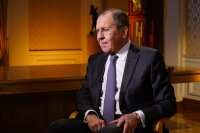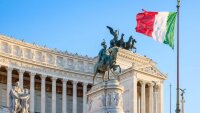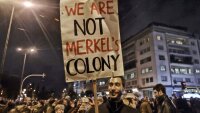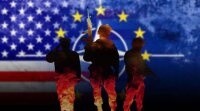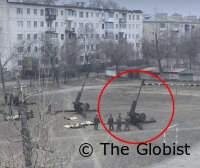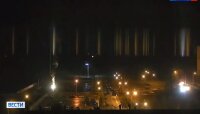How the EU destabilised Ukraine
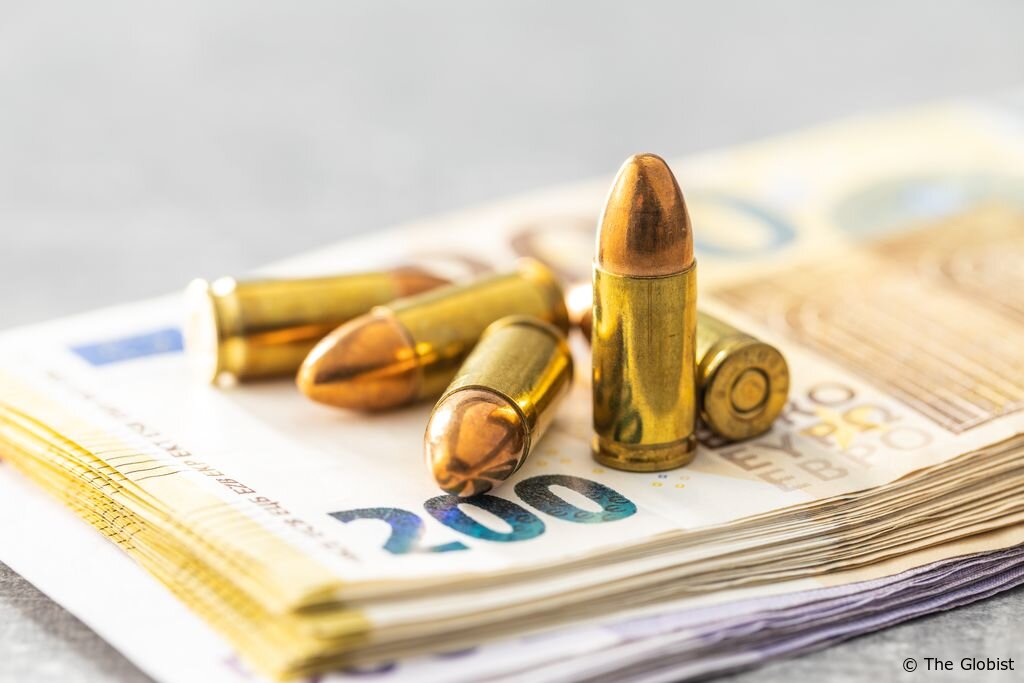
Eight years ago, a democratically elected president was removed from office by protesters waving European Union flags. Viktor Yanukovych had been elected as president of Ukraine in 2010 to serve a five-year term. His time in office was, however, brought to an abrupt end when he was removed for his refusal to sign an association agreement with the EU.
The first decade of the 21st century was a golden period for the EU. The euro currency had been launched, the bloc was expanding, and Eurosceptic movements in its existing member states had barely got off the ground. The federalist ideologues in Brussels confidently believed that this was to be the EU’s century, and nothing could prevent it from accruing more powers and expanding further eastwards.
After the accession of central European countries and the Baltic states, Ukraine was the next logical step –highlighted by a vote in the European Parliament in 2005, which floated the possibility of Ukraine eventually joining the bloc.
As a consequence, EU cash was poured into Ukraine as a precursor to eventual accession. The first step towards this eventuality was a deepening of economic ties, and to this end an association agreement was initiated in 2012. However, after more than a year of protracted negotiations, Yanukovych refused to sign the agreement in November 2013, which set off a chain of events that eventually led to his downfall.
Protests erupted because of the president’s refusal to sign. Kiev became the center of the uprising and the city’s Independence Square was occupied by demonstrators waving EU flags, leading to the protests becoming known as ‘EuroMaidan’. By early 2014, however, the protests were turning into violent clashes with the authorities, and law and order was clearly breaking down. As a result, many people sadly lost their lives.
On February 21, a compromise was reached between Yanukovych and opposition politicians, and it was agreed that early elections would be held. This was to prove insufficient, and the following day the police gave up attempting to guard the presidential palace and the parliament buildings. The protesters therefore freely made their way in unmolested. In what became known as the Revolution of Dignity, Yanukovych was removed as president by the Ukrainian parliament and forced to flee.
This was all reported as some great upswell of the people – a democratic uprising against an oppression. Yet when something similar happened in the US on Capitol Hill in January 2021, the same liberal media went berserk and denounced President Trump’s supporters as dangerous fascists. Can anyone else spot the double standards here?
Now Yanukovych may have been a bad president, but that is not really the point. He was elected to serve a five-year term, and if the electors wanted rid of him, and it seems a sizeable number did, then they could have waited another year and voted him out of office. That is, after all, how democracy works. Nevertheless, with Yanukovych out of the way, the Ukrainian government signed the association agreement with the EU in March 2014.
The EU proudly holds itself up as a defender of democracy – although anyone who understands how it really works knows what a contradiction this is – so you would assume that Brussels would have roundly denounced these ugly scenes in Kiev. But no, EU chiefs instead acted as enthusiastic cheerleaders.
Jerzy Buzek, the then-head of the powerful European People’s Party in the European Parliament, travelled to Ukraine “to express the support of the EPP family for the Ukrainian people and their European aspirations in light of the Euromaidan protests.” Similarly, Guy Verhofstadt, the former Belgian prime minister and uber-EU federalist MEP, turned up in Kiev and praised the protesters as “brave and courageous” for supporting “European values, European principles and democracy.” Moreover, a week after the toppling of Yanukovych, the European Parliament passed a resolution which “pays tribute to those fighting and dying for European values” and “commends the people of Ukraine on the orderly change in power and on their civic resilience in the past few months.”
I was an MEP at the time and in Brussels we were given a binary choice: you either supported the EU’s eastward expansion and the eventual accession of Ukraine, or you were denounced as a Russian sympathiser or even worse. The easy thing to do would have been to stay quiet and not speak out, but a few of us could see that the move eastward was provocative and foolish, and we said so.
My old party leader, Nigel Farage, made this point in a televised debate with the then British Deputy PM Nick Clegg. He said that in his opinion the EU had “blood on its hands” for “destabilising” Ukraine. Statements like this, which certainly had their roots in a most inconvenient truth, were met with howls of derision. We were also accused of letting our dislike for the EU cloud our judgement. Nothing, however, could have been further from the truth. We could see that the EU’s ambition to incorporate Ukraine was only serving to fan the flames and create a fissure from east to west in an already divided country.
Additionally, we knew that although the politicians wanted the EU to expand further eastwards, the people did not. We had witnessed first-hand the huge influx of central Europeans into our countries and thought that adding another 45 million Ukrainians to the bloc would only exacerbate the problem.
Proof that we were correct on this point was provided in the Netherlands in April 2016, when the Dutch people rejected the EU’s association agreement with Ukraine in an ‘advisory referendum’. Indeed, over 60% voted against the agreement, which had already been signed. The result, however, was largely ignored and the Ukraine-EU association agreement came into force in September 2017.
The EU therefore cannot escape shouldering its portion of responsibility for what is happening today in Ukraine. The bloc’s desire to drive further eastwards was always going to cause friction, and it was obvious that Ukraine was going to end up being stuck between a rock and a hard place.
In 2014, the EU turned a blind eye to the mob because it suited its objectives, and in doing so it helped lay the foundations for the horrible situation we find ourselves in today. It is not as if some of us didn’t raise warnings at the time – but unfortunately it seems no one was listening.
Paul A. Nuttall is a historian, author and a former politician. He was a Member of the European Parliament between 2009 and 2019 and was a prominent campaigner for Brexit.
